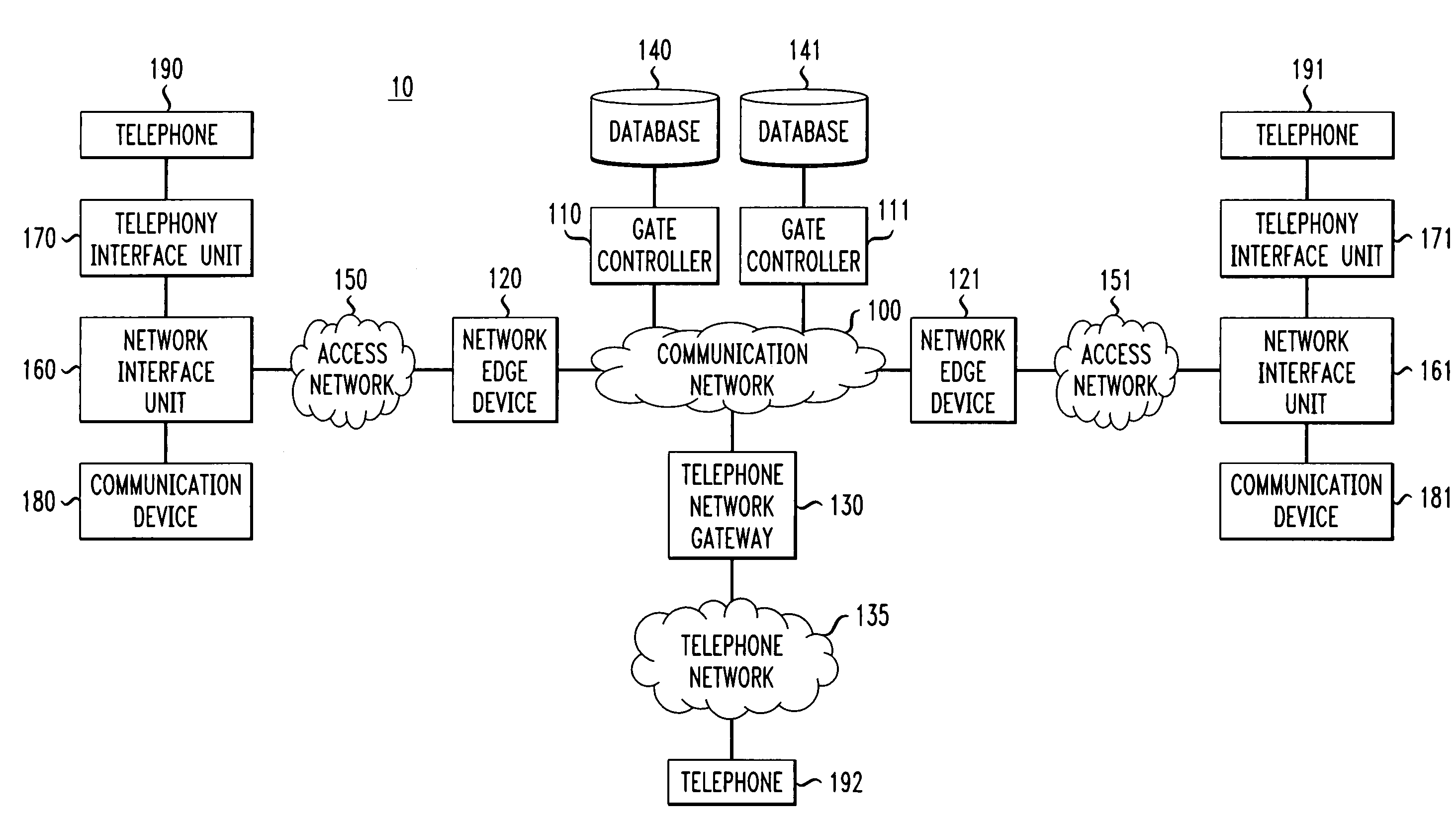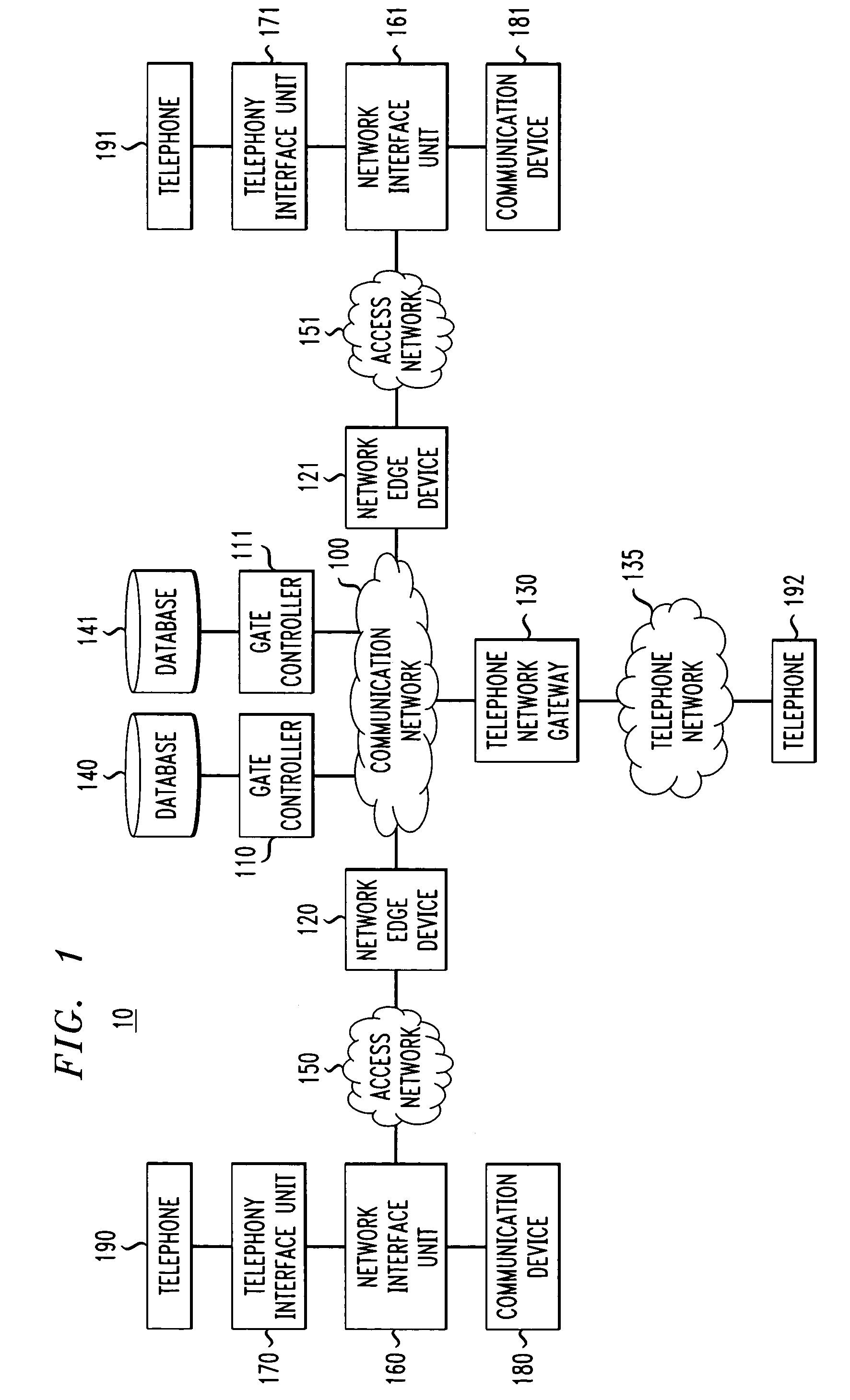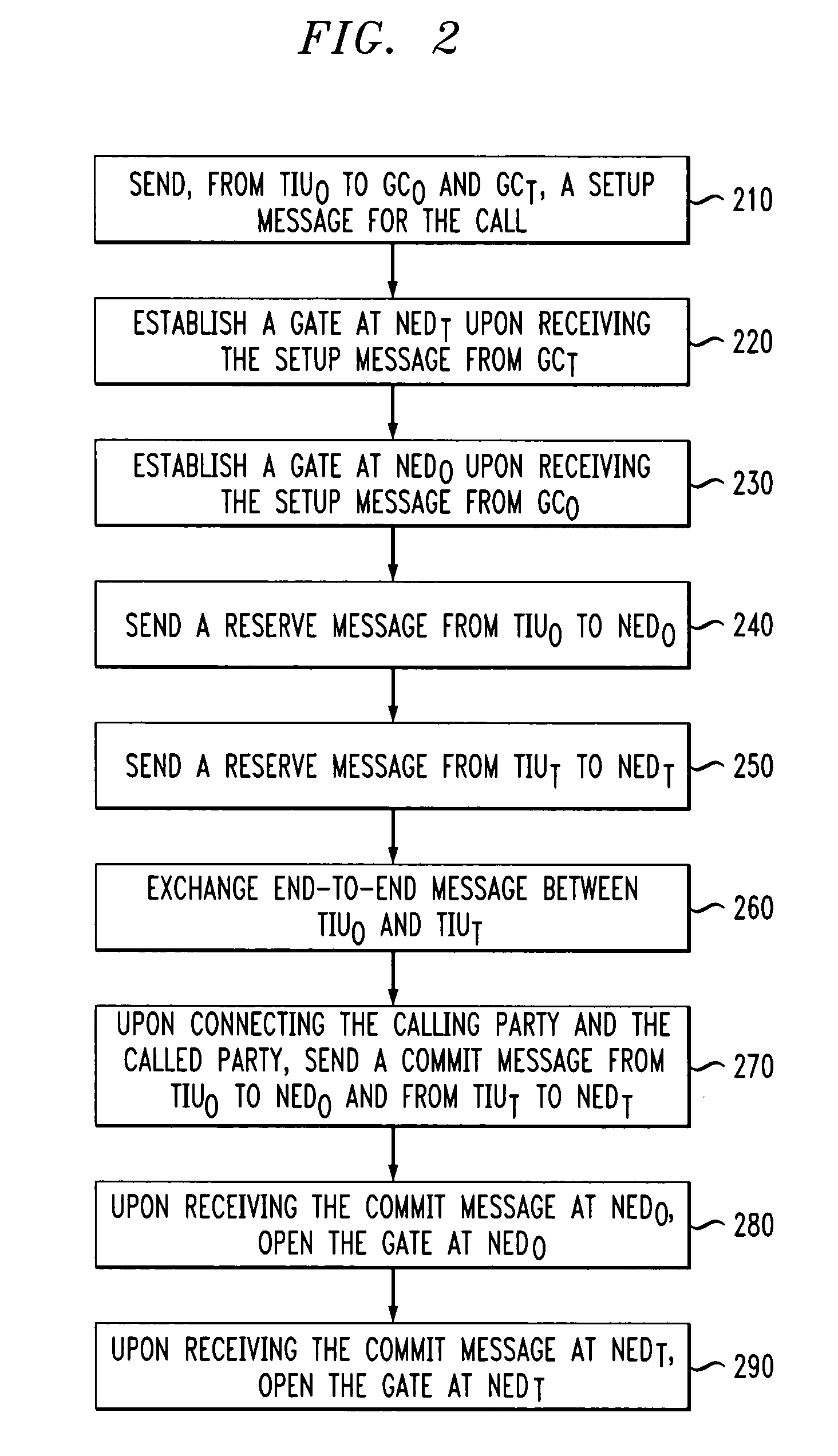Method for allocating network resources
- Summary
- Abstract
- Description
- Claims
- Application Information
AI Technical Summary
Benefits of technology
Problems solved by technology
Method used
Image
Examples
Embodiment Construction
[0039]Embodiments of the present invention relate to a communications system having a combination of different types of networks, such as a data network(s) (based on, for example, packet switching), a telephone network(s) (such as the Plain Old Telephone Network (PSTN)), and / or a cable network(s). Such a communications system can include intelligent end-terminals that allow a service provider to provide various types of services involving the different types of networks and to exploit the capabilities of the end-terminals. For example, packet telephony can be implemented in embodiments of the present invention where voice can be received and transmitted by a telephone or a communication device (such as a personal computer) connected to the data network via a cable network.
[0040]Embodiments of the present invention relate to call authorization, call signaling, network resource management and end-to-end signaling between communication devices (e.g., telephones, personal computers, etc...
PUM
 Login to View More
Login to View More Abstract
Description
Claims
Application Information
 Login to View More
Login to View More - R&D
- Intellectual Property
- Life Sciences
- Materials
- Tech Scout
- Unparalleled Data Quality
- Higher Quality Content
- 60% Fewer Hallucinations
Browse by: Latest US Patents, China's latest patents, Technical Efficacy Thesaurus, Application Domain, Technology Topic, Popular Technical Reports.
© 2025 PatSnap. All rights reserved.Legal|Privacy policy|Modern Slavery Act Transparency Statement|Sitemap|About US| Contact US: help@patsnap.com



